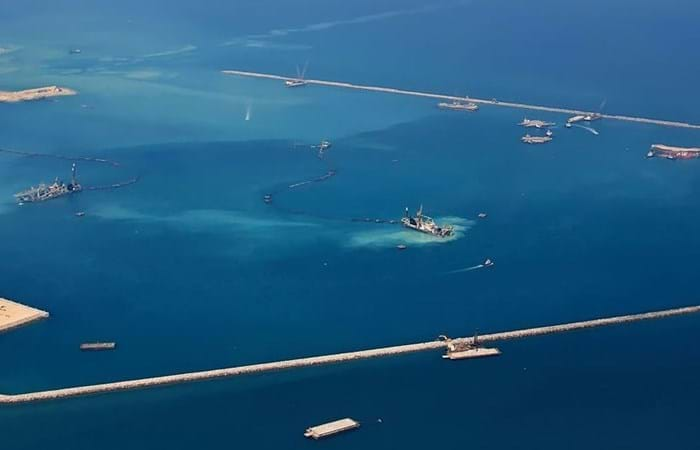Khalifa Port and Industrial Zone (KPIZ), one of the largest port development projects in the world, is aimed at providing infrastructure for the growing industrial and commercial activities of Abu Dhabi. The new port was built close to the biggest coral reef in the Arabian Gulf.
Brief
Boskalis was commissioned to perform the dredging work for the offshore Khalifa Port. We are carrying out the work in collaboration with our partner company Archirodon and Hyundai of South Korea. Work on this major project started in February 2008. The project includes:
- Dredging of an access channel and a harbor basin
- Reclamation of a port island
- Construction of breakwaters
- Construction of a causeway with a bridge to the container terminal of the Emirates Aluminum Smelter Project.
Challenge
Khalifa Port is located close to the most extensive coral reef in the Arabian Gulf. With an area of 194 km² it provides the habitat for 17 species of coral, sponges, seagrass beds and hundreds of fish species. The project area is also close to seawater intakes for the ADEA desalination plant, the main supplier of drinking water for Abu Dhabi. Protecting both these areas from excessive suspended sediment concentrations is vitally important in the execution of this project.
Solution
This is how Boskalis tackled the challenges:- More than 15 fixed monitoring stations have been installed around the site, transmitting real-time data on turbidity, waves, currents, water levels and weather conditions;
- A dedicated monitoring vessel, operational 24 hours a day, takes continuous additional measurements;
- Water samples are taken and tested on a daily basis;
- Regular dive inspections of the coral reef are carried out;
- Continuous hydrographic surveying monitors changes in the level of the seabed;
- Silt screens have been installed over a distance of several kilometers, to separate the project area from the coral reef.
- Modeling is being carried out at Deltares to predict the turbidity and suspended sediment concentrations around the work areas. This information is used to schedule and execute the works in such a way as to minimize the environmental impact.


